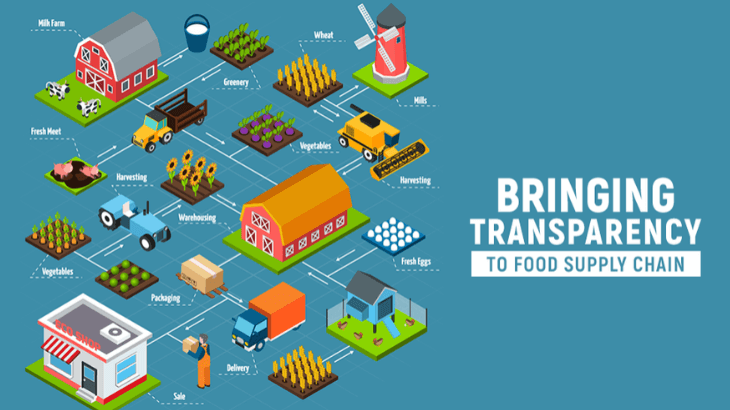Discover the benefits of agroforestry practices in enhancing biodiversity and sustaining livelihoods through innovative integration of trees and shrubs in agriculture.
Agroforestry, the integration of trees and shrubs into agricultural landscapes, offers a transformative approach to farming that enhances biodiversity and sustains livelihoods. By harmonizing forestry and agricultural practices, agroforestry can address some of the most pressing environmental and socio-economic challenges of our time. This blog post explores the various agroforestry practices that can revolutionize the agri-business sector, promoting a sustainable and profitable future for farmers and the planet alike.
What is Agroforestry?
Agroforestry is the intentional integration of trees and shrubs into agricultural landscapes. This practice is not new; it has been utilized for centuries across various cultures. However, in the context of modern agri-business, agroforestry practices are being recognized for their potential to enhance environmental sustainability and economic viability. By incorporating trees and shrubs, farmers can create a more diverse and resilient ecosystem.
1. Understanding Agroforestry
Agroforestry involves the deliberate integration of trees and shrubs into crop and animal farming systems. This practice differs from traditional agriculture by promoting biodiversity and providing multiple benefits to both the environment and the farmer. According to the Food and Agriculture Organization (FAO), agroforestry systems can increase farm productivity by improving soil health, water management, and crop yields.
2. Benefits of Agroforestry in Agri-business
Agroforestry practices can transform agri-business by enhancing ecosystem services and providing economic benefits. Trees and shrubs act as windbreaks, reduce soil erosion, and improve water retention, leading to better crop yields. Furthermore, they offer additional income streams through the production of fruits, nuts, timber, and non-timber forest products (NTFPs).
Types of Agroforestry Practices
Alley Cropping
Alley cropping involves planting rows of trees or shrubs with alleys of crops in between. This practice improves soil fertility through the decomposition of leaf litter, enhances water retention, and provides habitat for beneficial insects and wildlife. Examples include maize grown between rows of leguminous trees like Gliricidia sepium.
Silvopasture
Silvopasture integrates trees, pasture, and livestock into a single system. This method offers shade and shelter for animals, reduces heat stress, and enhances pasture productivity. Trees such as oak or pine are commonly used in silvopasture systems to provide forage and improve soil quality.
Windbreaks and Shelterbelts
Windbreaks are rows of trees or shrubs planted to protect crops and livestock from wind damage. Shelterbelts, on the other hand, are more extensive and offer broader protection. These systems reduce soil erosion, increase crop yields, and provide habitats for wildlife. Common species used include poplar and willow.
Riparian Buffers
Riparian buffers are strips of vegetation planted along waterways. These buffers prevent soil erosion, filter pollutants, and enhance water quality. They also provide habitat for aquatic and terrestrial species. Trees such as willows and alders are effective in riparian zones.
Environmental Benefits of Agroforestry
Biodiversity Enhancement
Agroforestry practices play a crucial role in boosting biodiversity. By creating diverse habitats, they support various species of flora and fauna. This biodiversity is essential for maintaining ecosystem services that are vital for successful agri-business operations.
Soil Health Improvement
Trees and shrubs contribute to soil health by preventing erosion, enhancing nutrient cycling, and increasing organic matter content. Healthy soils are foundational to the success of agri-business, leading to better crop yields and reduced need for chemical fertilizers.
Climate Change Mitigation
Agroforestry practices can sequester carbon, helping to mitigate the effects of climate change. Trees absorb carbon dioxide from the atmosphere, storing it as biomass. This process not only benefits the global climate but also enhances the sustainability of agri-business practices.
Economic Benefits for Agri-business
Diversified Income Streams
By integrating trees and shrubs into their farms, agri-businesses can diversify their income streams. Products such as fruits, nuts, timber, and non-timber forest products can provide additional revenue sources, reducing reliance on a single crop and increasing financial stability.
Improved Crop Yields
The microclimatic benefits provided by trees can lead to improved crop yields. For instance, shade from trees can reduce heat stress on crops, while windbreaks can protect them from wind damage. These factors contribute to more resilient and productive agri-business operations.
Long-term Sustainability
Agroforestry practices promote long-term sustainability by enhancing soil health, reducing erosion, and increasing biodiversity. These practices ensure that agricultural lands remain productive and viable for future generations, securing the future of agri-business.
Social Benefits and Community Engagement
Job Creation
Agroforestry can create jobs in tree planting, maintenance, and harvesting. This can be particularly beneficial in rural areas where employment opportunities may be limited. By providing jobs, agri-business can play a significant role in community development.
Knowledge Sharing and Capacity Building
The adoption of agroforestry practices often involves knowledge sharing and capacity building. Farmers learn new skills and techniques, enhancing their ability to manage diverse agricultural systems effectively. This educational aspect strengthens the overall agri-business sector.
Cultural and Recreational Benefits
Agroforestry landscapes can offer cultural and recreational benefits. Trees and green spaces can enhance the aesthetic value of farmland, providing recreational opportunities for local communities. This can foster a deeper connection between people and the land, enriching the cultural fabric of agri-business regions.
Challenges and Solutions
Land Tenure and Policy Support
One of the significant challenges in implementing agroforestry is secure land tenure. Farmers need assurance that they will benefit from the trees they plant. Policies supporting land tenure security and incentives for agroforestry adoption are crucial.
Knowledge and Training
Many farmers lack knowledge about agroforestry practices and their benefits. Extension services, farmer training programs, and demonstration sites can help disseminate information and promote the adoption of agroforestry.
Market Access
For agroforestry products to be profitable, farmers need access to markets. Developing value chains and market infrastructure for agroforestry products is essential to ensure farmers can sell their produce at fair prices.
Case Studies and Success Stories
The EverGreen Agriculture Project in Africa
The EverGreen Agriculture project promotes the integration of trees into cropping systems across Africa. This initiative has successfully improved soil fertility, increased crop yields, and enhanced livelihoods for thousands of smallholder farmers .
Agroforestry in Latin America
In countries like Brazil and Costa Rica, agroforestry practices such as shade-grown coffee and cocoa have been implemented successfully. These systems enhance biodiversity, improve soil health, and provide sustainable livelihoods for farmers .
Kenya's Green Belt Movement
Green Belt Movement in Kenya is a successful example of agroforestry enhancing biodiversity and sustaining livelihoods. Founded byWangari Maathai, the movement has planted over 51 million trees, improving environmental health and providing economic benefits to local communities. This initiative demonstrates the potential of agroforestry to transform agri-business and promote sustainable development.
India's Agroforestry Policy
Steps to Implement Agroforestry
- Assess Your Land: Understand your soil type, climate, and existing vegetation to determine the best agroforestry practices for your land.
- Plan Your System: Decide which trees, shrubs, and crops to integrate based on your goals and local conditions.
- Start Small: Begin with a pilot project to test and refine your approach.
- Seek Support: Engage with local agricultural extension services, research institutions, and agroforestry networks for guidance and support.
- Monitor and Adapt: Continuously monitor your agroforestry system and make adjustments as needed to improve outcomes.
Conclusion
Agroforestry practices offer a sustainable solution to enhance biodiversity and sustain livelihoods in the face of environmental and economic challenges. By integrating trees and shrubs into agricultural landscapes, farmers can improve soil health, increase crop yields, and diversify their income sources. The benefits of agroforestry extend beyond the farm, contributing to climate change mitigation, food security, and rural development. As we move towards a more sustainable future, it is essential to promote agroforestry practices and support their adoption in agri-business. Join the movement for sustainable agriculture by integrating agroforestry practices into your farming systems. Share your experiences and thoughts in the comments below!
Call to Action Join the movement towards sustainable farming by integrating agroforestry practices into your agri-business. Explore the resources available, connect with experts, and start making a positive impact on your farm and the environment today. Leave a comment below to share your experiences or ask questions about agroforestry!


















.jpg)
.png)
.png)